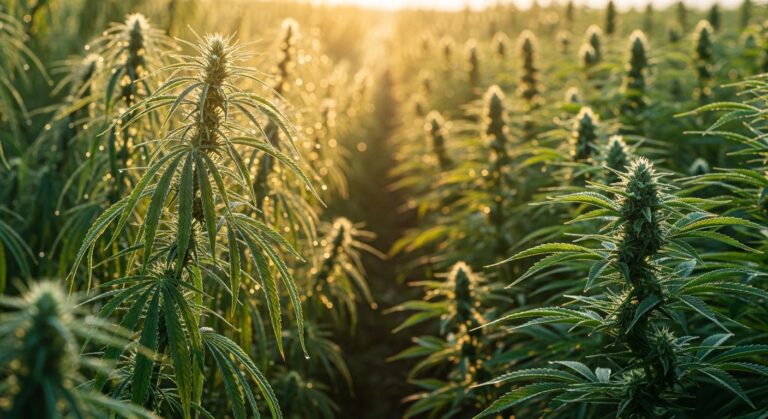Contents
Introduction to Hemp
Hemp has been around the block a few times. If the hemp plant could talk, it might regale us with tales of ancient China, where it was spun into fabric, or medieval Europe, where it provided trusty rope. A variety of the Cannabis sativa species, hemp is like the responsible, teetotaling cousin at a family reunion full of more eccentric relatives. It’s a plant with a résumé that spans thousands of years, serving humanity with everything from clothing to food to construction materials.
In modern times, hemp is gaining newfound attention for its sustainability and versatility. Its resurgence is helping to reshape industries and inspire innovation. In Australia, the regulatory framework surrounding hemp has evolved, making it a legally distinct entity from its psychoactive relative, marijuana, and paving the way for its commercial cultivation.
Characteristics of Hemp
Physically, the hemp plant stands tall and proud, often reaching heights of over three meters. It has skinny leaves that might remind you of a palm tree trying to pass unnoticed at a cannabis convention. One of the most notable differences between hemp and cannabis (a.k.a. marijuana) is THC levels—hemp contains just 0.3 percent THC or less, which is a bit like trying to get a caffeine buzz from chamomile tea.
Hemp seeds and oil pack a nutritional punch, boasting high levels of omega-3 and omega-6 fatty acids, making them a darling of the superfood world. As for growing hemp, it’s a farmer’s dream: it grows quickly, doesn’t need much in the way of pesticides, and enriches the soil for future crops, leaving Mother Nature with a smile.
Understanding Cannabis
Cannabis, the celebrity plant with its entourage of cannabinoids like THC and CBD, has a bit of a reputation. THC is the life of the party, providing those psychoactive effects, while CBD stands on the sidelines, offering relaxation without the high. Cannabis comes in various strains and varieties, each with its unique blend of cannabinoids and terpenes, the aromatic compounds that give each strain its distinct scent profile.
In Australia, cannabis’s legal status can be a bit of a head-scratcher. While medical use is legal under strict regulation, recreational use remains a no-go. This landscape is reminiscent of trying to understand federal law versus state law nuances in the United States, where cannabis legality can vary wildly depending on where you are.
Differences Between Hemp and Cannabis
At first glance, hemp and cannabis plants might seem like identical twins, but delve a little deeper, and you’ll notice distinct differences. The critical divide lies in THC and CBD levels—while cannabis can have THC levels that send you on a mind-bending celestial journey, hemp’s 0.3 percent keeps everything grounded.
Their uses diverge significantly too. Hemp finds its place in producing textiles, bioplastics, and hemp oil, whereas cannabis is often sought for its therapeutic and recreational benefits. Growing these plants also requires different techniques. Hemp is the robust marathon runner of the field, while cannabis may need a bit more pampering, like a prized rose bush.
Uses and Applications of Hemp
The uses of hemp are as varied as a well-stocked vending machine. In industry, it’s spun into durable textiles, molded into bioplastics, and even mixed into concrete to create eco-friendly building materials. Perhaps you’re more of a foodie? Hemp seeds and hemp oil bring a nutritional edge to any meal, full of healthy fats and proteins.
The wellness world hasn’t missed hemp’s memo, with CBD products popping up to help with pain, anxiety, and a long list of other ailments. And with new markets emerging quicker than you can say ‘Farm Bill,’ the innovative possibilities for hemp products are practically endless.
Hemp’s Role in Sustainability
As an environmentally friendly plant, hemp earns its green stripes with ease. It’s like Earth’s personal spa treatment; it helps with carbon sequestration, improves soil health, and requires less water than many crops. Some farmers have even used it for crop rotation, leading to healthier soil and improved yields.
Successful hemp initiatives have been popping up globally, showcasing its potential in pushing sustainable agriculture forward. These stories aren’t just feel-good footnotes—they’re blueprints for a more sustainable future.
Challenges and Controversies Surrounding Hemp
Despite its many benefits, hemp isn’t without its challenges. Common misconceptions still lump it in with its more psychoactive cousin, cannabis, leading to cultural and regulatory hurdles. Navigating the market can be like trying to find a needle in a haystack while blindfolded, with regulatory challenges and intellectual property disputes flaring up like dry leaves in a fire.
Still, with legal frameworks like the Australian guidelines becoming clearer, the future of hemp looks cautiously optimistic—even if there’s a bumpy road ahead.
Future Perspectives on Hemp and Cannabis
The world of hemp and cannabis is on the cusp of exciting developments. Research is delving deeper into potential uses and benefits, hinting at future innovations in hemp-based products that could change the game. Consumer demand is shifting too, with a growing appetite for sustainable and health-conscious products.
As we look to the horizon, the future of hemp in Australia—and indeed, the world—promises to be a fascinating one. Whether you’re a farmer, a consumer, or just hemp-curious, this versatile plant is on an upward trajectory, set to become an integral part of our sustainable future.



